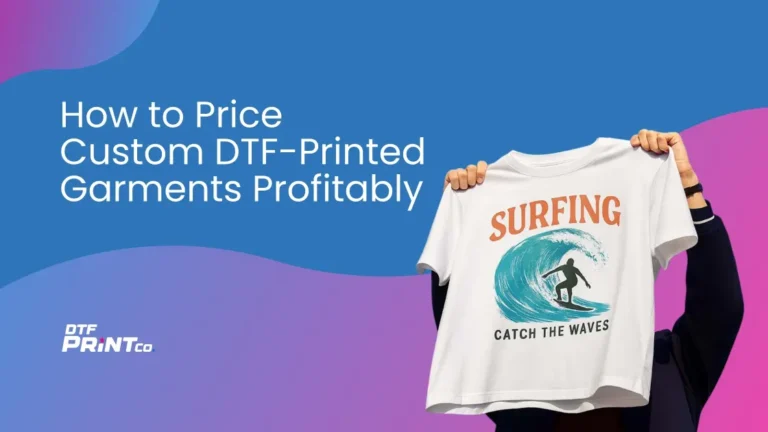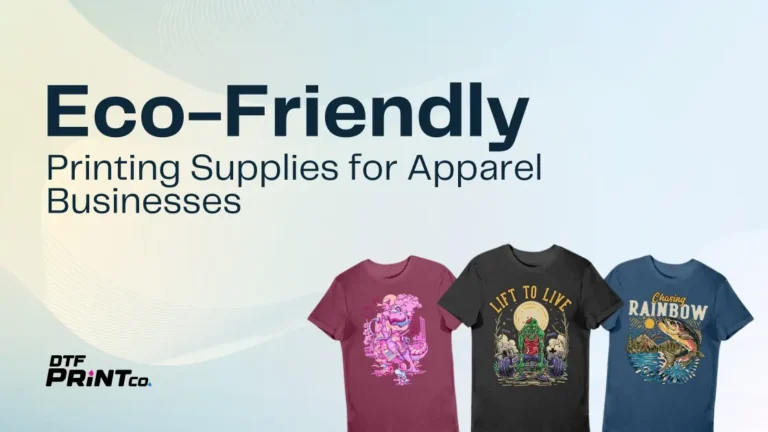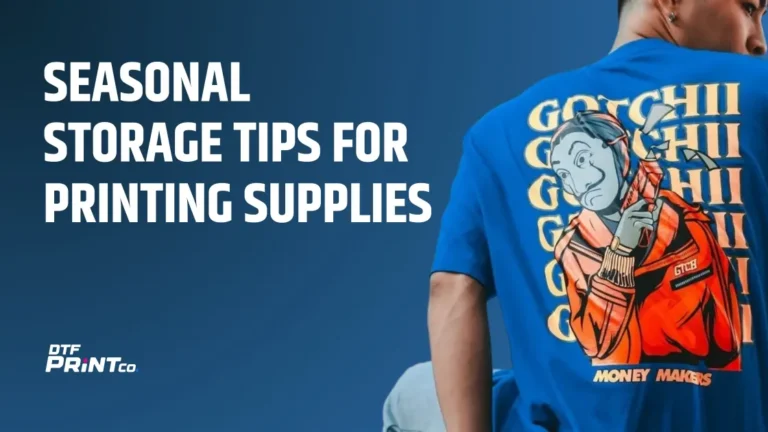In the world of custom apparel, crafting, and product personalization, two heat transfer techniques dominate the conversation: sublimation and HTV (Heat Transfer Vinyl). Whether you’re a beginner DIY crafter or a small business owner scaling a print-on-demand shop, choosing the right method can directly affect the quality, longevity, and cost-efficiency of your products.
In this guide, we’ll break down the pros and cons of both sublimation and HTV, show where each method shines, and help you decide which fits best with your goals—whether it’s customizing cotton tees at home or printing full-color mugs for your ecommerce brand.
What is Sublimation Printing?
Sublimation is a heat transfer method that turns dye into gas without passing through a liquid state. This process bonds the dye directly into the fibers of synthetic materials, typically polyester, resulting in vibrant, permanent prints that won’t fade, crack, or peel over time.
How Sublimation Works:
- A design is printed onto special sublimation transfer paper using sublimation inks.
- The printed design is placed on the substrate (usually polyester or polymer-coated items).
- A heat press applies high temperature (usually around 400°F) and pressure.
- The heat turns the ink into gas, which penetrates the surface and solidifies as it cools.
Ideal Materials for Sublimation:
- 100% polyester fabrics
- Polymer-coated ceramics (e.g., mugs, tiles)
- Sublimation blanks (keychains, coasters, tumblers)
- Aluminum photo panels and signs
Sublimation Applications:
- Custom t-shirts and activewear
- Branded drinkware
- Photo gifts and promotional products
- Mousepads, phone cases, and fabric banners
Sublimation is particularly favored in commercial printing environments because of its scalability, speed, and professional finish.
What is Heat Transfer Vinyl (HTV)?
Heat Transfer Vinyl, often shortened to HTV, is a soft, flexible vinyl material that is cut into designs using a vinyl cutter or plotter. The cut design is then heat-pressed onto garments or other compatible materials. HTV adheres to the surface instead of becoming a part of the fabric like sublimation.
How HTV Works:
- A design is cut out from a sheet or roll of HTV material using a vinyl cutter (like Cricut or Silhouette).
- The excess vinyl is removed, or weeded, leaving the final design.
- The design is placed onto the garment with a carrier sheet.
- A heat press or household iron applies heat and pressure to fuse the vinyl to the fabric.
Compatible Materials for HTV:
- Cotton
- Cotton-poly blends
- Canvas and burlap
- Leather and faux leather
- Wood, paper, and even glass (using specialty vinyl)
HTV Applications:
- Custom apparel (t-shirts, hoodies, uniforms)
- Tote bags, caps, and shoes
- Wall decals, signs, and wood signs
- DIY home decor and holiday crafts
HTV is widely used in both small-scale crafting and personalized gifts due to its low startup cost and ease of use.
Sublimation vs HTV: Head-to-Head Comparison
Let’s explore the most critical differences and similarities between these two methods in the categories that matter most:
| Feature |
Sublimation |
HTV (Heat Transfer Vinyl) |
| Material Compatibility |
Polyester, polymer-coated surfaces |
Cotton, canvas, blends, wood, leather |
| Durability |
Permanent; becomes part of material |
Surface-level; may peel or crack |
| Color & Design Flexibility |
Full-color, photo-quality prints |
Solid colors; layering or printable HTV required for complex designs |
| Feel of Design |
Seamless, no texture |
Vinyl texture on top of material |
| Ease of Use |
Moderate learning curve |
Beginner-friendly |
| Initial Cost |
Higher (printer, ink, blanks) |
Lower (vinyl cutter, HTV sheets) |
| Maintenance |
Printers need cleaning and ink replacement |
Basic cutter and heat press maintenance |
| Scalability |
Ideal for batch or bulk production |
More suited to single items or small batches |
Pros and Cons of Sublimation
Pros:
- Vibrant Colors: Excellent for full-color designs, gradients, and photographic prints.
- Long-Lasting Results: Design is embedded into the material, making it fade-resistant.
- No Texture: The final product feels smooth with no raised surface.
- Scalability: Great for large-scale production due to fast turnaround.
Cons:
- Material Limitations: Requires polyester or polymer-coated surfaces.
- Color Restrictions: Only works well on white or light-colored backgrounds.
- Startup Cost: Sublimation printers, inks, and compatible blanks can be expensive.
- Specialized Supplies: You need specific inks, papers, and substrates.
Pros and Cons of HTV
Pros:
- Material Versatility: Works on cotton, canvas, wood, and more.
- Low Startup Cost: Affordable cutters and HTV rolls make it accessible.
- Great for Beginners: User-friendly tools like Cricut are widely available.
- Layering Possibilities: Allows multi-color designs using different vinyls.
Cons:
- Surface Feel: Designs are raised and may feel stiff.
- Durability Issues: Peeling, cracking, or fading over time if improperly applied.
- Time-Consuming for Bulk: Each design must be manually cut and weeded.
- Design Limitations: Complex or photo prints require printable HTV, which is more costly.
Best Use Cases: When to Use Sublimation or HTV
Choose Sublimation if:
- You’re working with 100% polyester garments or coated blanks.
- Your designs are full-color or photo-quality.
- You want a seamless, professional finish.
- You’re operating a print-on-demand or commercial shop.
- You’re producing items like custom mugs, puzzles, or sportswear.
Choose HTV if:
- You’re customizing cotton t-shirts, baby onesies, tote bags, or caps.
- You want a flexible, affordable entry point.
- You’re producing custom gifts or small-batch orders.
- You prefer hands-on crafting and personalized designs.
- You need to press designs onto dark or colored fabrics.
Advanced Tips for Better Results
For Sublimation:
- Use a lint roller before pressing garments to avoid dust causing transfer errors.
- Perform a press test on each new substrate type.
- Always work in a well-ventilated area due to gas conversion.
For HTV:
- Pre-press fabric to remove moisture and wrinkles.
- Use a Teflon sheet or parchment paper to prevent sticking.
- Store HTV rolls in cool, dry places to prevent warping.
Common Questions Answered
Can you sublimate on cotton?
Not directly. Sublimation requires polyester to bond. However, you can apply sublimation on cotton using sublimation spray coatings or heat transfer sheets, though durability suffers.
Can HTV be used on mugs or ceramics?
Yes, but with limitations. HTV can stick to hard surfaces, but it’s not dishwasher-safe and peels over time. Sublimation is the preferred method for mugs.
Which is more cost-effective for beginners?
HTV. With tools like Cricut EasyPress and budget-friendly vinyl sheets, you can start with minimal investment.
Can I combine both methods?
Yes. Many creators use sublimation for full-color designs and add HTV for text or highlights. This hybrid approach is creative and visually appealing.
Final Thoughts: Which Should You Choose?
When comparing Sublimation vs HTV, the best choice depends on your goals:
- If you prioritize vibrant color, long-term durability, and plan to scale a business, sublimation is a powerhouse.
- If you need material flexibility, want to work with cotton, or enjoy custom crafting, HTV is your go-to.
Each method has its sweet spot. By understanding your audience, materials, and budget, you can make an informed decision that boosts both creativity and profitability.
Whether you’re printing t-shirts in your garage or building a custom gift shop from scratch, mastering these two methods can open doors to stunning results and satisfied customers.






